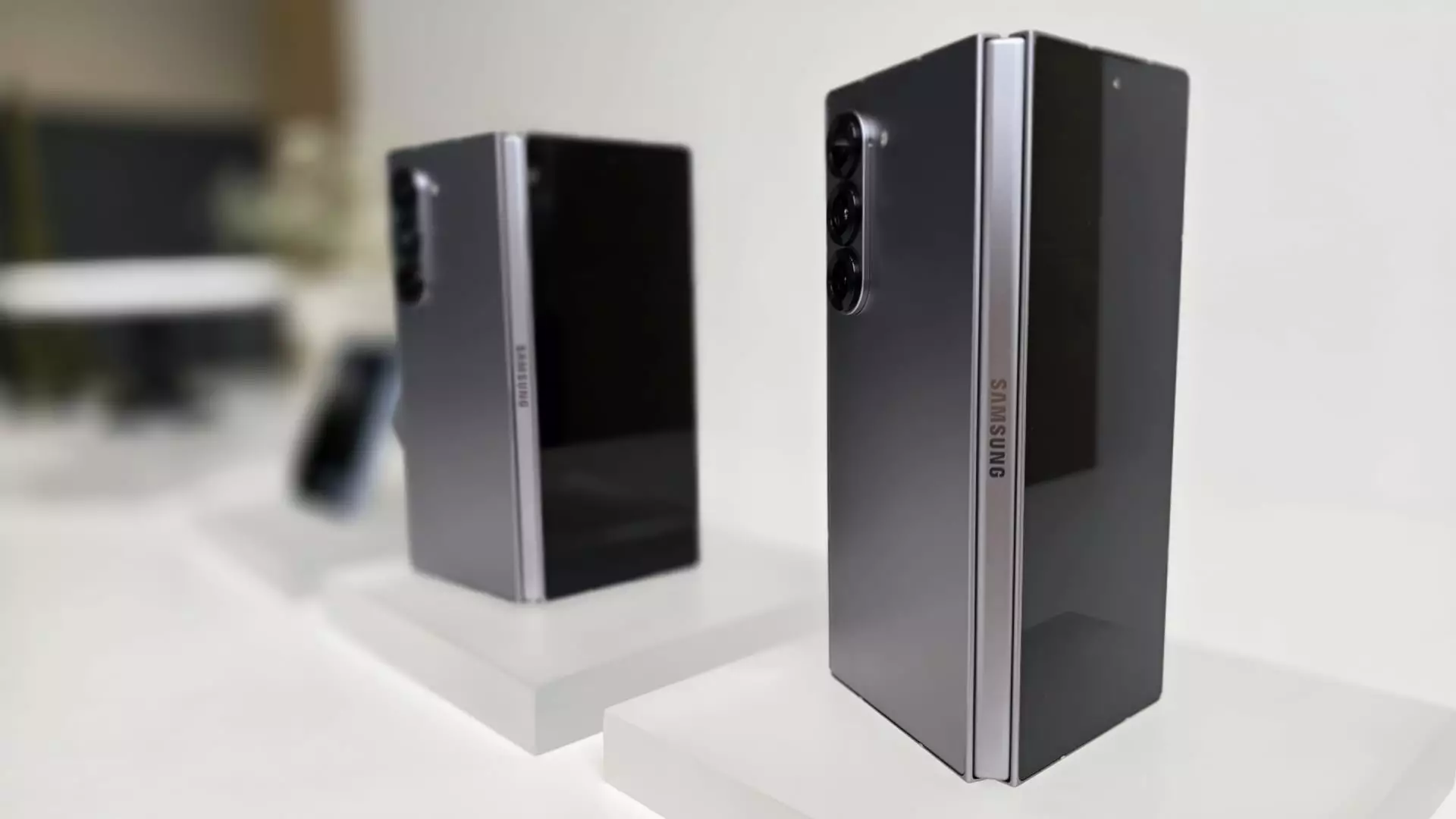In the highly competitive world of smartphones, Samsung has long been a dominant player, particularly with its innovative foldable devices. However, as the market evolves, the emphasis on design has shifted, with a laser focus on the dimensions and weight of these groundbreaking devices. The recent development of slimmer foldable smartphones by Chinese manufacturers such as Honor and Oppo has heightened the urgency for Samsung to rethink its strategy. Thinness is no longer just a luxurious feature; it is now a critical selling point. As Ben Wood, chief analyst at CCS Insight, aptly states, “people aren’t prepared to accept the compromise for a thicker and heavier phone.” This sentiment encapsulates the evolving consumer expectations in an age where portability and ease of use dictate purchasing behavior.
A Comparative Analysis: Samsung vs. Its Rivals
Samsung’s latest foldable device, the Galaxy Z Fold6, boasts a thickness of 12.1 mm (0.48 inches) and a weight of 239 grams (8.43 oz) when folded. In contrast, its competitors have made significant strides in minimizing both thickness and weight. For instance, the Oppo Find N5 measures a mere 8.93 mm when closed, while the Honor Magic V3, at 9.2 mm, continues to push the boundaries of what consumers can expect from a foldable device. These specifications are not just numbers; they represent a shift in the consumer mindset toward slimness as a non-negotiable aspect of modern smartphones. The question arises: can Samsung close the gap in this critical area of design?
The Impending Launch: A Glimpse of Samsung’s Strategy
With rumors of an upcoming launch set for next month, Samsung appears to recognize the need to elevate its foldable lineup. The preview blog post released by the company touts the upcoming Galaxy Z series as “the thinnest, lightest and most advanced foldable yet.” Yet, these statements, if not substantiated by tangible improvements in design, risk being seen as mere marketing buzz. Notably, Honor’s competitive launch on July 2 for its latest folding model, the Magic V5, serves as a reminder to Samsung that the competition is relentless and innovative designs are being eagerly awaited by consumers.
The Market Dynamics: A Slow Adoption Journey
Despite the exciting technological advancements, foldable smartphones have struggled to gain traction in the overall smartphone market. The prediction from CCS Insight indicates that foldables will only account for about 2% of all smartphone sales this year. This figure starkly contrasts the meteoric rise expected as technology rapidly evolves. While thinner and lighter devices could be the catalyst for revitalization, they won’t be the sole panacea. Consumer perceptions and understanding of the need for foldables are equally critical. Wood emphasizes that the design changes should be so compelling that they capture the imagination of potential buyers, re-establishing folding devices as must-haves rather than novelties.
The Vision for the Future: Will Apple Join the Fray?
Interestingly, amidst the competition between Samsung and Chinese manufacturers, another major player, Apple, has remained conspicuously absent from the foldable scene. Analyst Ming-Chi Kuo has suggested that Apple is on the verge of venturing into this space, with expectations of a foldable iPhone emerging next year. If Apple successfully integrates a sleek folding design with its established customer base, the dynamics of the foldable market could shift dramatically. Samsung’s continued dominance hinges not only on refining its design but also on anticipating and adapting to the strategies of all potential competitors, including those that haven’t yet fully entered the arena.
The Consumer Perspective: Beyond Aesthetics
Ultimately, as Samsung prepares to unveil its next foldable masterpiece, the true challenge lies in understanding the insatiable cravings of consumers. While technical specifications such as thickness and weight are paramount, they cannot overshadow the importance of utility and overall user experience. Many potential buyers still struggle to justify the need for a folding device, regardless of its sleek profile. Educating consumers on the advantages of these devices and delivering a product that is not just advanced but also exceedingly practical will be essential for traction in a hesitant market. The path forward necessitates that Samsung harnesses its storied legacy of innovation to carve a niche that resonates with consumers today, one that marries exquisite design with undeniable utility and ease of use.

